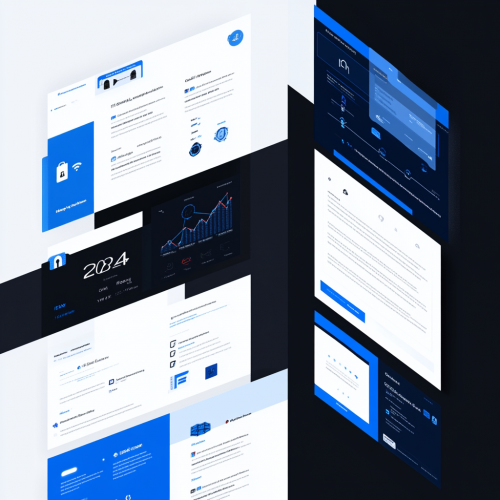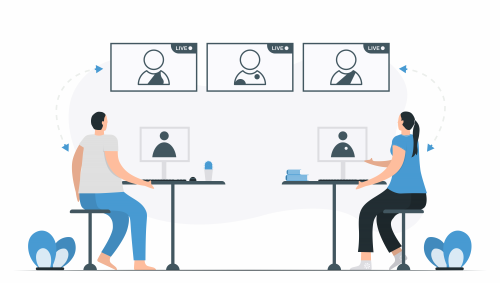Man-made phenomena have the common specific feature: they tend to end abruptly, even if the exhaustion was predicted way before. This, for example, is true regarding music records: vax shafts to bakelite pancakes to vinyl to magnetic tapes to compact cassettes to CDs to Ipods to no physical devices at all, since everything went online. Surely, most carriers are still present and even, like vinyl, have developed a kind of cult, but the switch from one carrier to another went more brisk and more general with every next device.
The switch we are going to cover today is still happening. The process is amusing for at least two reasons: the next ”device” invention dates back to 1998, and the transition does not go fast enough in the present fulminant Internet era.
(Not so) scary tale
“In the beginning the Earth was without form, and void…” No, let’s move the story some thousands years forward, to the Internet times already. The WWW from its earliest stages meant communication between devices, at those times computers and some PDAs, maybe. To properly identify each device (otherwise your messages could be received by a very random user, and vice versa) the Internet Protocol (IP) was introduced. Its Version 4, IPv4, had satisfied the Net: a 32-bit, four groups of 2/3 digits formula promised about 4.3 billion unique IP addresses.
Concerns, however, were raised almost immediately: “This will not be enough – and soon”. The gloomiest forecasts indicated 2011 as the year of IPv4 shortages. The mildest predictions cited 2017 or maximum one year later. Yet in late 2020 the IPv4 storage is not completely empty. It is happening due to reuse and/or resale of existing 32-bit addresses. The MIT case is one of the most illustrious: MA Institute of Technology decided its 8 of 14 million (!) IPv4 addresses are an “excess” – and sold them, to facilitate its own network development and to fund studies “of the future of the Internet and the global cyber-infrastructure”.
MIT played the whole thing very safely, cause at the moment of decision making it already had 20 nonillion IPv6 addresses. (A nonillion is the ⅓ of google: if you have forgotten, a google is a numeric, 1 followed by 100 of zeroes – likely the biggest number ever possible. So a nonillion is 1 followed by “only” 30 zeroes; and MIT, again, has 20 nonillion IPv6 addresses).
Behind “just” nembers
Advanced in many ways IP Version 6 was introduced back in 1998. Figuratively speaking, developers performed “a double jump”, implementing not the next in a row 64-bit system, but 128-bit straight away. So, compared to IPv4, IPv6 was much longer from its birth: eight groups of four hexadecimal digits, separated by colons. Better just to provide a sample: 2002:6xi9:1234:5678:9013:4m4y:0375:1969.
Longer sequence means more variables. The total size of feasible IPv6 pool amazes: 340 trillion trillion unique identifiers. This quantity, assessed as virtually endless, is merely one IPv6 advantage. The others are:
- Increased security. Version 6 was designed with end-to-end encryption support in mind.
- Improved performance. More hierarchical routing system handles packets more efficiently.
- Advanced support of mobile devices. For instance, while switching between 3G/4G and WiFi, a device can retain the same IPv6 address, making connection faster, more simple and secure.
Need for transit
The main reason for switching from Version 4 to Version 6 is amusing too, because it’s so simple. Matters of security, performance, etc. are important, but might be only secondary. The biggest issue as the number, again – the number of devices that need IP addresses today and tomorrow.
Brief and approximate calculation of just 7 billion people on this planet multiplied by all phones, tablets, smartwatches and computers for personal use only already gives the number equal to the entire pool of IPv4s. Addition of corporate-owned devices, smart features of modern cars, GPS systems for aviation, space, maritime, etc., – by the most humble count denotes the real need for those trillions of Version 6 IPs.
And a cherry on top – the Internet of Things, which not only adds the comparative amount of devices, but also requires high automation and security: all in all, we’re talking about safety of smart houses and security of repetitive (groceries, insurance, mortgages, etc.) bank transactions.
Business approach to IPv6 transition is not as passionate, but no less important. There are hidden obstacles that might explain the unhurried pace of the process.
Translation to transition
In plain words, Internet Protocols # 4 & 6 do not exactly understand each other. As both systems are in use today, the proper interpretation of non-compliant data is needed. This is done by network address translation (NAT).
Follow the packet that exits a full-IPv6 corporate network and is intended to travel the troublesome IPv4 world. The inner, private IPv6 address of the sender has to be translated into the public one, so that the IPv4 world could develop a path for that packet to reach its destination. NAT performs such translation; as a result a myriad of IPv6-compliant devices can “hide” under just one public IPv4 address.
The reverse procedure hardly needs a separate explanation cause everything is done the same – well, the opposite – way, from public IPv4 to private IPv6.
The before mentioned, business-specific obstacle is: transition to IPv6 is only possible for the entire network – yes, including all its infrastructure. It takes time and money, although the Internet is full of step-by-step guides towards the transition and offers to assess a particular company for its readiness of IPv6.
Some more numbers
Version 6 usage is very uneven. Understandably, wireless operators are the pioneers: among the U.S. cellular carriers IPv6 penetration is from 60+ to 90+ percent. The whole world is switching too, slowly but steadily: 2017 numbers were about 25%, for 2020 it is roughly 30%. Google (this time the company, not the numeric) collects scalable data of hits to its main page via Version 6: in 2017 merely 15%, for 2020 – solid 35%.
To facilitate the transition, some Internet service providers offer IPv6 solutions for free, while IPv4 are paid “optional extra”.
For those exceptionally curious: Internet Protocols # 1, 2 and 3 were sort of Schrodinger’s kitten – existing and not at the same time. These versions were closely tied with TCP and not performing solo, so in further development and problem solving IPv4, the satisfactory one, was born. While IPv5 did work on its own, with proven results: this solution was designed for voice and video streaming primarily, but had the same limitations, 32-bit and the rest, as Version 4. So finally IPv5 was abandoned in favour of IPv6.

 Previous article
Previous article


